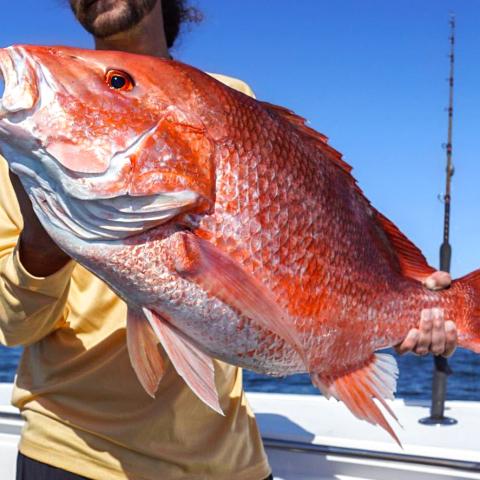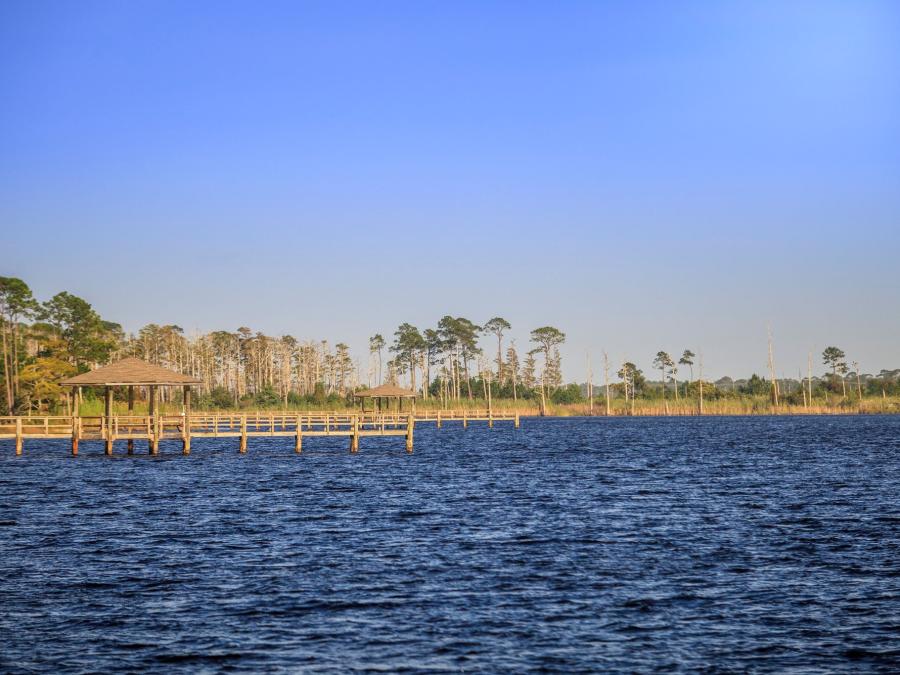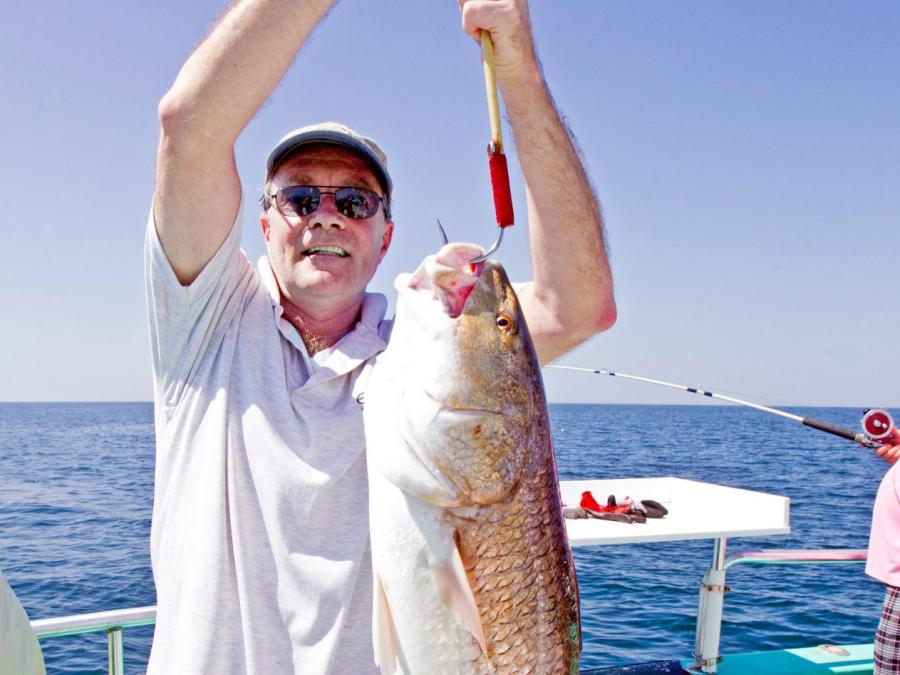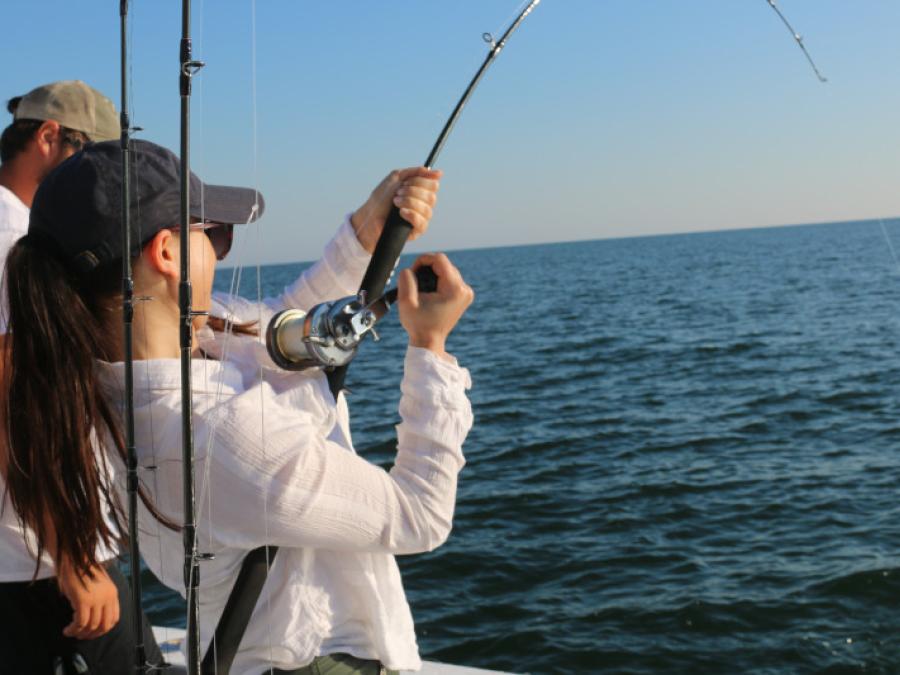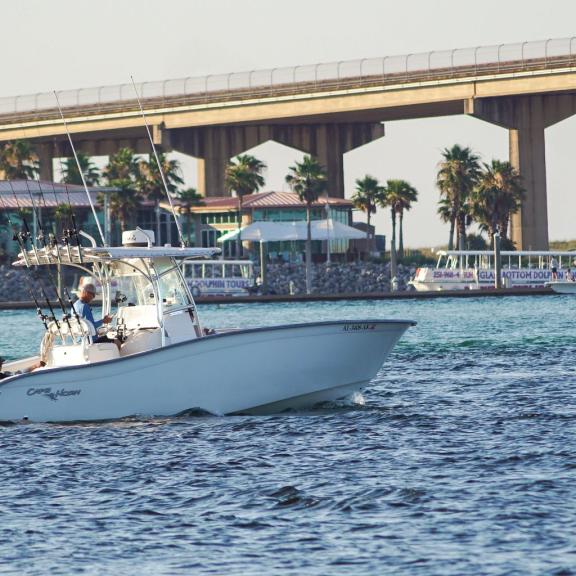
When I started writing about the outdoors on the Alabama Gulf Coast more than 30 years ago, anglers would look forward to the spring and the migration of cobia, also known as ling or lemonfish. Back then, the serious cobia anglers had their boats rigged with "tuna towers" to spot the fish as they migrated from south Florida along the Gulf Coast, and Alabama anglers would intercept them in nearshore waters.
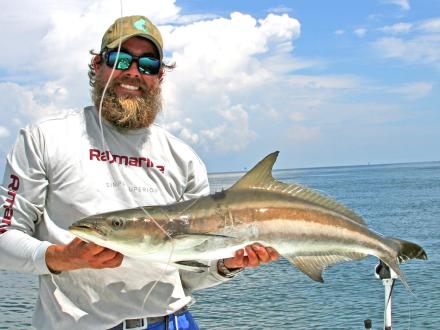
Cobia Season & Migration
Over the years, however, the cobia migration has changed, and the large numbers of fish swimming past our beautiful beaches are not seen as often. The fish, which can grow up to 6 feet long and more than 100 pounds, seem to trickle into the northern Gulf waters. Some studies have suggested that some cobia actually head to some petroleum rigs in deeper water and hang out year-round.
Still, from spring through early fall, Alabama anglers can find cobia around structures in nearshore waters. Red snapper anglers may even snag a fish or two when fishing in Alabama's vast artificial reef zones.
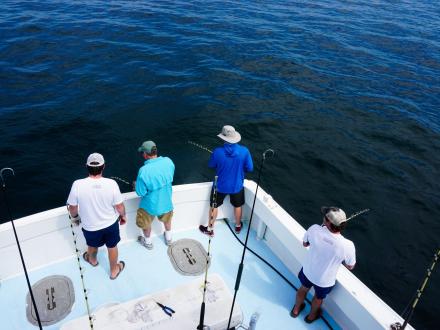
How to Catch Cobia
After filling the baitwell with live bait, most cobia anglers will start hitting every type of structure available along the coast, from buoys to channel markers to petroleum rigs, to start trying to spot a fish they can target with a live bait. Anchored ships waiting to head up Mobile Bay can be another productive spot for cobia.
If you encounter one just free swimming, try to position the boat to make a cast that will give the bait the most natural look. However, cobia are notorious for being picky eaters, and sometimes they will ignore anything in their way. At other times, they are voracious feeders, and all you need to do is get the bait in their vicinity.
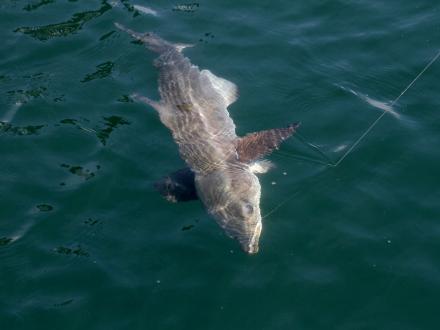
Best Baits & Rods for Cobia
Anglers also use brightly colored cobia jigs as well as live eels that can be available at the tackle and bait shops along the Gulf Coast, although the eels can become scarce. Cobia will eat saltwater catfish (hardheads), finger mullet, pinfish, cigar minnows, or sizeable live shrimp if you can't find live eels. Some people have great luck with a live blue crab hooked in the corner of the shell.
Most cobia anglers prefer an 8-foot rod with a decent backbone and a reel capable of holding a couple hundred yards of the 30-pound-test main line. Use a barrel swivel and add about 3 feet of leader material, either 60- or 80-pound fluorocarbon, depending on water clarity. Hook size should be 7/0 to 9/0 for traditional hooks and 7/0 or 8/0 for circle hooks. Remember that you must give the fish plenty of time when using circle hooks and never set the hook. After you've given the fish enough time to get the bait firmly in its mouth, just start reeling down on the cobia. The circle hook will then slide to the side and hook the fish on the edge of its mouth.
It's best to fight the fish for a while to let it become tired and less likely to be thrashing around when you haul it into the boat.
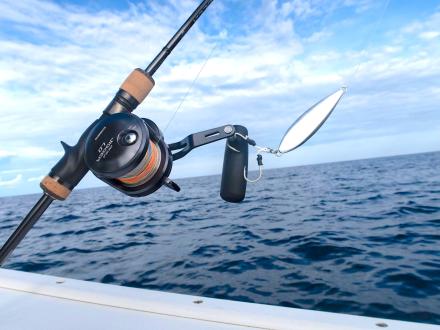
Cobia Fishing Tips
Cobia steaks are delicious. I prefer to throw them on the grill and baste them with a garlic butter sauce with a squeeze of fresh lemon. When you flake the fish with a fork, it's ready for the dinner plate. Bon appétit.
Alabama has a one-fish per person daily limit (two per boat) with a minimum size of 36 inches fork length, which is measured from the fork of the tail to the tip of the nose.
Several charter boats in Gulf Shores and Orange Beach offer cobia trips when the fish are around, so make a plan to visit the beautiful Alabama Gulf Coast this spring or summer and try to catch a tasty cobia.
